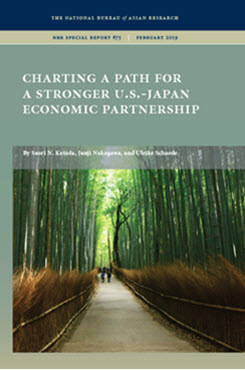Negotiating a U.S.-Japan Trade Agreement
Prospects and Challenges
This essay examines the prospects for a U.S.-Japan trade agreement and discusses the implications for other regional frameworks such as the Comprehensive and Progressive Agreement for Trans-Pacific Partnership (CPTPP) and the Regional Comprehensive Economic Partnership (RCEP).
EXECUTIVE SUMMARY
MAIN ARGUMENT
The Asia-Pacific region needs a high level of trade liberalization and advanced rules for trade and investment for the enhancement of global value chains. This goal can be achieved solely through a region-wide FTA or the establishment of the Free Trade Area of the Asia-Pacific (FTAAP). Despite Japan’s efforts to convince the U.S. to rejoin the Trans-Pacific Partnership (TPP), which could pave a path toward this high-standard framework for trade and investment rules in the region, the U.S. indicated a preference for a bilateral trade agreement with Japan. Japan has agreed to begin negotiations on the bilateral deal early this year. Although the U.S.-Japan trade agreement will by itself have a very limited impact on the creation of an FTAAP, it could be a stepping stone to achieving this goal.
POLICY IMPLICATIONS
- The scope of the first phase of U.S.-Japan negotiations will likely focus on market access, including the important but sensitive issue of access for U.S. agricultural products and automotives to the Japanese market. Given that the European Union is benefiting from widespread market access in Japan due to the recently concluded Japan-EU trade agreement, it would be wise for the Trump administration to swiftly wrap up first-stage negotiations so that U.S. exporters remain competitive.
- A common platform of rules for the management of global value chains that will host both the U.S. and China, as well as the rest of the Asia-Pacific region, is needed. In the medium to longer term, this goal can be achieved solely through a region-wide FTA that includes both the U.S. and China.
- Although the 2016 Lima Declaration on FTAAP envisioned the TPP and the RCEP as two possible options to create an FTAAP, the RCEP is not a viable path to this goal because it provides a lower level of trade liberalization and less advanced rules for trade and investment than the TPP. Instead, the most viable pathway to an FTAAP is the United States either returning to the TPP or joining the expanded CPTPP.
Junji Nakagawa is Professor of International Economic Law in the Institute of Social Science at the University of Tokyo.



